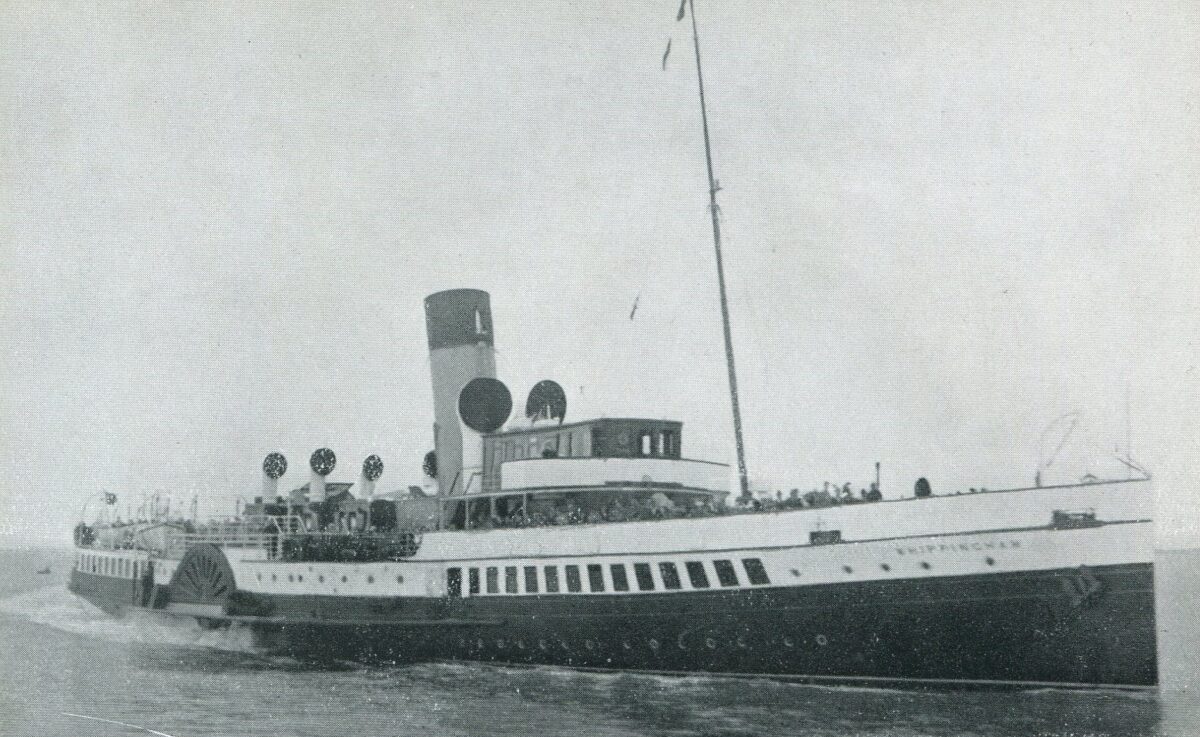
On Sunday 11th September 1932 one or other of the Southsea or Whippingham was rostered to leave Portsmouth at 11am, Clarence Pier Southsea at 11.15am and South Parade Pier at 11.30 for Sandown, Shanklin and Ventnor returning to Portsmouth via the Southsea Piers for 2.10pm. Then one or the other would have set off again at 2.45pm for another circuit returning from Ventnor at 4.50pm, Shanklin at 5.15pm and Sandown at 5.30pm for a return to Portsmouth at 6.50pm.

The fares for these trips were not expensive with even the dearest return from Portsmouth to Shanklin coming in at just 2/6 (£9.70 today). Compare that with the day return from Portsmouth to Ryde with Wightlink today which is £18.20 with the period return an eye-watering £26 for what is billed as a twenty two minute trip each way. That’s £27.30 and £40.80 respectively per passenger per hour steamed.
On Saturdays the vast capacities of these two paddle steamers made them particularly useful to augment the Portsmouth to Ryde ferry service given the tremendous numbers of passengers travelling on “change over day” starting or ending their Isle of Wight holidays. On Wednesdays and some Thursdays as we will see in a later post, these two paddle steamers usually ventured further afield.
The roster to the Isle of Wight piers offered a variety of trip options catering for different market segments.
There were those passengers just using the steamer as a ferry connection from Portsmouth to their holiday destination at Sandown, Shanklin or Ventnor.
There were those just wanting a morning or afternoon round trip of a little under 4 hours duration.
There were those wanting to make a day of it with about five hours ashore at Ventnor, at Shanklin or Sandown.
There were those boarding at Ventnor, Shanklin or Sandown for a round trip to Southsea or Portsmouth.
It was a simple but very commercial formula which worked well to pack in the revenue and provide a variety of trip options within a simple basic package.
Another advantage of this route was that as Sandown and Shanklin are on the east coast of the Isle of Wight they are comparatively sheltered from the prevailing SW winds and this would have increased the window for sailing to minimise cancellations due to the weather.
At 244ft in length Southsea and Whippingham were big paddle steamers built only two years earlier in 1930 and were fitted out to a high standard for passenger comfort. The Southern Railway steamer notices describe them as “the largest and most luxurious Steamers on the South Coast” and that wasn’t hyperbole.
Southsea was mined off the Tyne on 16th February 1941 whilst serving as an Admiralty minesweeper so that was the end of her.
Whippingham was refitted after war service and returned to the Portsmouth/Southsea to Ryde railway service but by then she had lost her Class III sea-going Passenger Certificates and sailed only on Class IV certificates for categorised “Partially Smooth Waters” within the Solent in an area bounded by Bembridge in the east, the Needles in the west and Southampton in the north.
Whippingham was withdrawn after the 1962 season and scrapped in Antwerp the following year.
Kingswear Castle returned to service in 2023 after the first part of a major rebuild which is designed to set her up for the next 25 years running on the River Dart. The Paddle Steamer Kingswear Castle Trust is now fund raising for the second phase of the rebuild. You can read more about the rebuilds and how you can help if you can here.
John Megoran
This article was first published on 11th September 2020.


